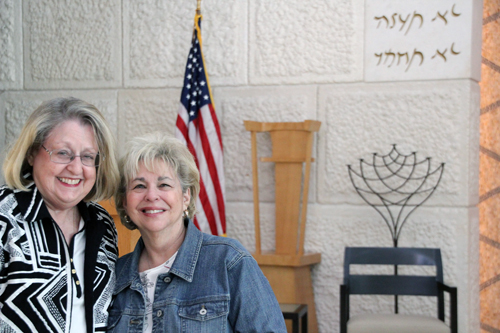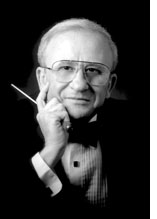
By David Amos

SAN DIEGO–Two weeks ago I shared with you a few interesting experiences we encountered in our trip of a month ago. We were two couples, finding places that all tourists either know or wish to visit, and other locations with possible twists and surprises.
In my first article, I covered visits with friends in the music world, Congregation Emanu-El inNew York, The Frick Collection, Sammy’s Roumanian Style Restaurant in the Lower East Side, the sites of the great battles of the Civil War in Gettysburg, Pennsylvania, and the chocolate folks at Hershey, Pennsylvainia
Then, we continued toAnnapolis,Maryland, where we enjoyed the beauty of the waterfront area, and the impressive grounds and buildings of the U.S. Naval Academy.
A walking tour of the Academy is seeing part of our history, where great moments and heroes are represented in the form of statues, paintings, ship models and artifacts. The grounds were superbly manicured. I also delighted to see a plaque dedicated to the memory of the composer of Anchors Aweigh!
There is a large courtyard called Tecumseh Court. At 12:05 p.m. every weekday, the midshipmen from the Academy present what is called the Brigade of the Midshipmen, a series of drill formations, all accompanied by a band of brass and percussion. And this is where we were somewhat disappointed. We were expecting to be knocked over by a service musical group, in perfect weather, playing in a location acoustically promising, surrounded by buildings; what we heard was an array of Sousa marches and other percussion drill music, weakly performed, with no spirit or pizzazz, which would not reach the standards of a respectful high school band. Go figure.
What was truly impressive for us at the Academy was the visit into the recently built Commodore Uriah P. Levy Center and Jewish Chapel. A truly magnificent modern structure, it contains the synagogue with an ample bimah in its East Wing, and a character learning center in the West Wing, which provides a fellowship hall and a place for study and reflection for midshipmen of all faiths. There were also several glass enclosed display cases, showing objects of Jewish interest as they related to the Navy, and historic photos of prominent Jewish naval officers.
We next drove back to New Jersey, stayed in a city called MountLaurel. This served as the launch point for several other worthy stops.
If you have never been to a place called Grounds for Sculpture, this in itself would suffice for many art lovers to make a trip to the East Coast. Located in Hamilton on the site of the former New Jersey State Fairgrounds and opened in 1992, it is the creation of J. Seward Johnson, a sculptor and philanthropist. He is one of the inheritors of the Johnson and Johnson fortune, and has dedicated his life “to make contemporary sculpture as an art form more accessible and to offer people from all backgrounds the opportunity to become comfortable with contemporary art”.
The magnificent grounds provide an ideal setting for a leisurely stroll, where at times you see no other visitors around you, and it becomes just “you and the art”. There are over 240 works by renowned artists, and new works are constantly added to the collection. I took dozens and dozens of photos.
You may have been exposed to Seward Johnson’s work without knowing it. Surely you have seen, heard of, or been next to his gigantic work, Unconditional Surrender, also known as The Kiss, which is near San Diego’s Embarcadero and the Midway.
Attached to the Grounds for Sculpture is the high-end restaurant Rats. Why such a name? “In Kenneth Grahame’s classic The Wind in the Willows , one of Seward Johnson’s favorite books, the character Ratty represented everything a host should be. As founder of Rats and Grounds for Sculpture, Mr. Johnson likens himself to Ratty, who threw the best parties and served the finest wine. Likewise the two share delightful imaginations and far-reaching dreams”.
In a happy coincidence, as we entered the restaurant for lunch, we met a most gracious Mr. Johnson who was finishing his meal. We have a nice photo of all five of us.
Because of time limitations, our planned visit to the Amish communities and Mennonite Country of Pennsylvania did not materialize.
But, we did spend an entire day in Philadelphia, in the Independence Square area, where we visited Independence Hall and Congress Hall (which was built as a courthouse, but was occupied by the U.S. Congress from 1790-1800, until the congressional building was completed inWashingtonD.C.). Across the hallway is the restored Pennsylvania Supreme Court Chamber, and in its west wing’s Great Essentials Exhibit , where you can see, close-up, original copies of the Declaration of Independence, the Articles of Confederation, and the U.S. Constitution. You can even see a silver inkstand which is believed to be the one used by the signers of the Declaration and Constitution.
But the majority of the day we spent at a building only a city block from Independence Square, namely, the National Museum of American-Jewish History. We were encouraged by our West Coast friends that this is a must-see museum for all of us, and it certainly merited all the advance hype. Housed in a glass enclosed four-story building, it is the only museum totally dedicated to the American-Jewish experience, through documents, artifacts and exhibits, from the arrival of the first Jewish community in 1654 to the present.
Although one can not deny the enormity and scope of such a project, and, admittedly, the exhibits were tastefully done, I felt a vacuum there that must be addressed. In the section covering American-Jewish lawyers, Justices Brandeis and Ginzburg were prominently covered, but hardly anyone else. Not even Justice Kagan, unless I missed it. In my specific specialty, there was plenty of coverage of the popular Jewish comedians and entertainers on film, television and Broadway, but there was hardly a name I did not recognize. In music, vast information on Irving Berlin, a few other pop songwriters, but hardly anyone seriously associated with classical music. In the downstairs floor there was a data base, where visitors could access names of Jewish Americans of note. Yes, I found Gershwin, Copland, Bernstein, and Perlman, but very few other musical luminaries. Here is an area where this museum could improve. That is, by not only highlighting the super-stars everyone knows and catering to our comfort knowledge, but introducing the public to other names (and there are hundreds in music alone), who have made significant contributions to American Society, in all disciplines.
The list of names that could be added to this data base is not only endless, but growing exponentially, and a way must be found to address this serious flaw so that the Museum will become more than a reinforcement of what most of us already know, but as a source and learning center to teach us something we did not know. There is certainly enough space in the Museum’s floor to accommodate this.
We enjoyed a fine dinner at Ponzio’s Restaurant and Bake Shoppe inCherry Hill,New Jersey, and on the next day, drove to Kennedy Airport and returned home.
*
Amos is conductor of the Tifereth Israel Community Orchestra and has conducted professional orchestras around the world. He may be contacted at david.amos@sdjewishworld.com
Mr. Amos,
As an avid music-lover I always enjoy your articles, including this last one.
I haven’t traveled as extensively in the US as you have, but in 1985 I spent a year in Lincoln, Nebraska, when my husband was engaged in his post-doctoral program at the university there. There, too, there is an interesting museum, displaying artefacts associated with the native population, the history of the pioneers in the region, and other aspects of life there, all housed in the magnificent Senate building. I am sure that wherever one goes in the US one will always find places of interest and beauty.